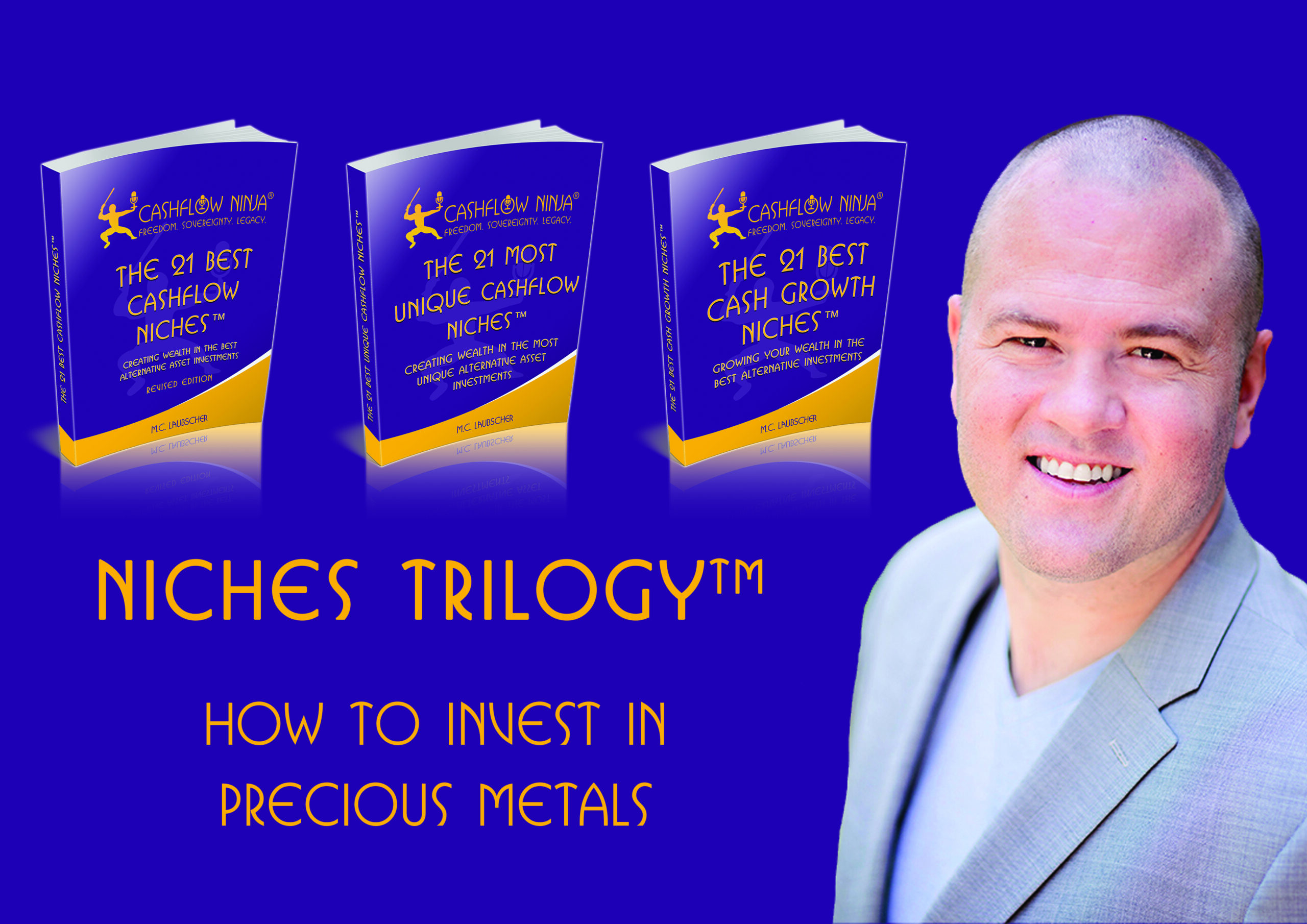
Gold and silver have been sought after and valued for thousands of years. They have had cultural, economic, and historical significance for centuries.
The ancient Greek philosopher Aristotle identified several characteristics that made gold suitable for use as money.
While he didn’t lay them out as a definitive list of five, the following are the primary reasons Aristotle appreciated gold as money:
Durability: Money should stand the test of time and not deteriorate. Gold doesn’t rust, tarnish, or decay, making it enduring.
Portability: Money needs to be easily moved and transported to facilitate trade. Due to its high value relative to its size and weight, gold can be easily carried and stored.
Divisibility: Money should be easily divisible into smaller units without losing value. Gold can be divided into coins or smaller units without losing its inherent value.
Consistency or Homogeneity: Each money unit must be uniform and identical to any other unit of the same weight or size. Gold is consistent, which means that a piece of gold of a particular size or weight is the same as any other piece of gold of the same size or weight.
Intrinsic Value: Gold is valuable in and of itself, not just as a representation of value. Its rarity, desirability for ornamental purposes, and use in various applications contribute to its intrinsic value.
Aristotle’s observations on the suitability of gold as money have persisted, and many of these characteristics continue to inform discussions about the ideal properties of cash even in contemporary economic debates.
Why Invest In Precious Metals?
Investors often turn to precious metals like gold and silver for various reasons, each offering unique benefits to their investment portfolios. With its historical significance, gold has been a medium of exchange for thousands of years, valued by ancient civilizations, and used extensively in coinage. Gold differs from paper money as a store of value; it maintains its purchasing power over time, making it a hedge against inflation and currency devaluation.
It’s also considered a safe haven during economic instability or geopolitical tensions, offering stability when other assets like stocks or bonds are volatile.
Additionally, gold serves as a diversification tool due to its low correlation with other financial assets, and being a tangible, physical asset provides psychological comfort to investors.
The limited supply of gold, which could fit into a 20-meter cube, adds to its demand and potential for price appreciation.
Silver, in contrast, has significant industrial applications and is a precious metal. Its dual demand influences its price, and its affordability relative to gold makes it accessible to smaller investors.
Silver’s smaller market and dual demand contribute to its volatility, potentially leading to more significant gains in bull markets.
The historical gold-to-silver ratio is also a factor investors consider when determining silver’s value relative to gold. Like gold, silver is seen as a safe-haven asset during economic uncertainties.
Investing in precious metals provides protection against inflation and currency devaluation, which can occur due to economic policies in heavily indebted countries. They also safeguard against geopolitical risks, with their prices often surging during political unrest or wars.
Diversification is another key advantage, as gold and silver provide alternatives to traditional stocks and bonds. The tangible ownership of these metals offers reassurance, as their value isn’t dependent on the performance of a particular company or bank.
Precious Metals Ecosystem
The precious metals industry is vast and complex, especially in gold and silver. In mining, the process starts with exploration, where companies use geological methods to search for new deposits. Once a deposit is discovered, a significant investment is required to develop the mine. The production phase involves actively mining gold or silver ore, followed by reclamation to restore the environment post-mining.
The next step is refining, where raw gold and silver are processed to remove impurities, resulting in pure forms like bars, coins, or other products. In the retail and commercial sphere, investors often purchase bullion through bars or coins. Gold, in particular, is widely used in jewelry, while silver’s conductive properties make it valuable in electronics, medicine, and other industrial applications.
From an investment perspective, there are several vehicles. Investors can buy physical bars, coins, or jewelry. Exchange-traded funds (ETFs) allow investors to track the price of gold or silver without owning the physical metal. Investing in mining stocks, focusing on companies that mine these metals, is another option. Additionally, futures and options derive their value from gold or silver prices.
Storage and security are crucial for investors who purchase physical gold or silver, with many opting for secure vaults or depositories. In contrast, others might choose private storage or safe deposit boxes. Central banks also play a role, as many hold substantial gold reserves, which form a part of their monetary policy.
This entire ecosystem makes the precious metals industry a significant part of the global economy and a diverse field offering various opportunities for investment and use.
The precious metals industry involves various players, including geologists, miners, refiners, transporters, and retailers. It is subject to significant regulations, from environmental concerns in mining to anti-money laundering regulations in sales. Trade associations like the World Gold Council and the Silver Institute provide research, set standards, and promote the industry. Marketplaces include physical markets like the London Bullion Market and commodity exchanges like COMEX. Numerous firms and individuals offer analysis and forecasts for the precious metals market.
To understand the industry, it’s important to consider price drivers such as interest rates, inflation, geopolitical events, and central bank activities. Geopolitical risks can affect mining operations, especially in politically volatile regions rich in resources.
The Difference Between Gold & Silver
Gold and silver have played significant roles throughout history as forms of money and stores of value. Since ancient times, civilizations like the Egyptians, Romans, and Greeks have treasured gold, which continues to be a foundational global asset for central banks. Its enduring value, inability to rust, and limited production make it the “ultimate money.” Silver, while also historically used as money, has recently been eclipsed by gold.
In terms of industrial use, gold’s applications in electronics and dentistry are notable, but its primary role remains as an investment in jewelry. Its price is generally influenced by investment demand and macroeconomic factors like geopolitical stability and central bank policies. Silver, conversely, is integral to numerous industries, including electronics and solar panels, due to its conductive properties. This industrial demand significantly influences its price, along with investment demand.
When considering market volatility and price points, gold typically exhibits less volatility, serving as a stable, safe-haven asset and especially useful as a hedge against economic instability or inflation. Silver, being more affordable but volatile, offers investment opportunities with potentially higher returns and risks.
Investors often choose to hold gold and silver for diversification, benefiting from their different market dynamics. Monetary policies and geopolitical events influence gold’s price, while silver can benefit from industrial demand, especially during technological advancements. Silver’s lower price point also makes it more accessible to a broader range of investors.
How To Grow Cash
Investors use various strategies to profit from gold and silver investments.
In this book, I focus on the buy-and-hold strategy. This strategy allows you to protect your wealth by maintaining the purchasing power of your savings.
Implementing the buy and hold strategy, investors buy physical gold or silver, like coins or bars, and hold onto them for a long time, expecting prices to rise. Precious metals have historically maintained purchasing power over the long term, especially during uncertain economic times, inflation, or currency devaluations.
In a buy-and-hold strategy, you can leverage the gold and silver ratio.
The gold-to-silver ratio is a financial metric indicating how many ounces of silver are needed to purchase one ounce of gold. Calculated by dividing the current gold price by the silver price, this ratio has historically varied. It was about 2.5:1 in ancient Egypt, while the Roman Empire set it at 12:1.
Over the last century, this ratio has seen fluctuations between 15:1 and 100:1, averaging around 47:1 during the 20th century and more recently moving between 50:1 and 80:1, with spikes in times of financial stress.
Investors use this ratio as a strategy guide. By setting benchmarks – considering ratios above 80 as high (indicating silver might be undervalued) and below 50 or 60 as low (suggesting silver is overvalued) – they decide when to buy or sell. In a high-ratio scenario, an investor might sell gold to buy relatively cheaper silver, expecting a return to a more typical ratio.
Conversely, a low ratio could prompt the sale of silver to buy gold. Regular monitoring and adjusting of holdings as the ratio changes aim to maximize the quantity of metal held rather than the dollar value. The strategy’s success is evident when the ratio narrows after an investment shift, potentially allowing an investor to switch back and end up with more of the initially sold metal.
How To Lose Money
Investors can face losses in gold and silver investments through various channels. The most direct loss occurs through price fluctuations; volatile precious metal prices, influenced by geopolitical events, inflation, and central bank policies, can lead to losses if bought high and sold low.
Over-concentration in gold and silver can result in missed gains from other asset classes or amplified losses during precious metals’ underperformance, highlighting the risk of a lack of portfolio diversification.
Physical gold and silver carry high transaction costs, including dealer premiums and storage expenses, which can erode investment returns.
Market timing is another risk factor, as predicting short-term price movements in these metals is difficult and often unsuccessful.
The precious metals market is also not immune to fraud and scams, posing risks of counterfeit products or deceptive investment schemes.
Liquidity concerns can also arise, sometimes making it challenging to sell gold or silver quickly without incurring losses.
Macroeconomic factors, such as inflation rates, currency strength, and interest rate changes, also significantly impact gold prices, with rising interest rates often diminishing gold’s appeal compared to yield-generating assets.
Lastly, the opportunity cost of investing in gold and silver becomes evident when other markets, like stocks, outperform, and capital is tied up in stagnating or declining precious metals.
Positives & Negatives Of Precious Metals
Positives:
Protection Against Inflation: Precious metals generally hold their value over time, which can safeguard against currency devaluation and inflation.
Portfolio Diversification: Adding gold and silver to your investment mix offers a way to diversify since their prices move differently from the stock market.
Tangible Assets: Unlike stocks or bonds, you can physically hold gold and silver, which gives some investors a feeling of security.
Easy to Sell: Gold and silver are recognized worldwide and are readily convertible to cash almost anywhere.
Safe Haven in Uncertain Times: Precious metals often perform well during geopolitical turmoil, financial crises, or economic downturns.
No Counterparty Risk: Unlike other investments, physically holding gold and silver doesn’t rely on another party’s obligations.
Long-Term Value: Historically, gold and silver have maintained their purchasing power over long periods.
Negatives:
No Passive Income: Gold and silver don’t generate dividends or interest, so the primary expectation for profit is price appreciation.
Storage Costs: Storing physical metals securely can incur expenses, and theft is risky if stored at home.
Price Volatility: While less volatile than stocks, the prices of gold and silver can still fluctuate.
Opportunity Cost: The money you invest in precious metals could earn more if invested in other assets, especially during bull markets.
Possibility of Confiscation: Though rare, governments have seized gold.
Premiums and Taxes: When buying physical metals, you may pay a premium above the spot price and face taxes on gains when selling.
Economic Growth Factors: During rapid economic growth and stability, other investments like stocks may outperform gold and silver.
Investment Opportunity Filter™
The Investment Opportunity Filter™ evaluates an investment opportunity based on cashflow, tax benefits, appreciation, and the leverage it provides.
Precious metals score a 2/4 with The Investment Opportunity Filter™.
Precious metals can increase in value over time, maintaining purchasing power, and it also allows for the leveraging of skill sets, capabilities, networks, and capital of others when you use a third party to buy and store your precious metals.
If you are interested in how to buy and store Gold & Silver securely, you can access our Gold & Silver Guide at www.cashflowninja.com/goldsilver.
If you are interested in learning how to be the bank with gold, you can access a free presentation at www.cashflowninja.com/bethebankwithgold
Download all the Niches Trilogy Books:
The 21 Best Cashflow Niches
Digital: https://www.
Audio: https://podcasters.spotify.
The 21 Most Unique Cashflow Niches
Digital: https://www.
Audio: https://podcasters.spotify.
The 21 Best Cash Growth Niches
Digital: https://www.
Audio: https://podcasters.spotify.
Listen To Cashflow Ninja Podcasts:
Cashflow Ninja
https://podcasters.spotify.
Cashflow Investing Secrets
https://podcasters.spotify.
Cashflow Ninja Banking
https://podcasters.spotify.
Share This
Related

898: Tom Dunkel: The Wealth Builders Playbook
My guest in this episode is Tom Dunkel. Tom Dunkel brings more than 30 years of experience in real estate, finance, and investing to his role as Managing Director of Eagle. Known for his disciplined approach and unwavering alignment with investors, Tom personally invests in every deal he presents, ensuring absolute trust and shared outcomes…

897: Eugene Shatsman: How To Grow & Scale Your Business Right Now
My guest in this episode is Eugene Shatsman. Eugene is the Managing Partner of National Strategic Group. Eugene teaches business strategy, consumer behavior, marketing, and what all of us want – how to drive more business into our businesses. His team at National Strategic has over 100 people, and they do a tremendous amount of…

896: Chris MacIntosh: Opportunities Around The Globe Right Now
My guest in this episode is Chris Macintosh. Chris has founded and built several multi-million dollar businesses in the investment arena, including overseeing the deployment of over $30m into Venture Capital opportunities and advising family offices internationally. Before this, Chris built a career at Invesco Asset Management, Lehman Brothers, JPMChase, & Robert Flemings. Interview Links:…
